10 Expert Tips for Growing Edibles in Containers
http://decor-ideas.org 03/23/2014 22:24 Decor Ideas
Most edibles do well in containers, and in some cases even prefer them. For gardeners with poor soil, or no soil at all, container gardening can be a way to create the edible garden your landscape wouldn’t otherwise allow you — all within steps of your house. But where to start? San Francisco Bay Area gardening consultant and edible-garden designer Steve Masley shares 10 great tips to growing the edibles in containers.
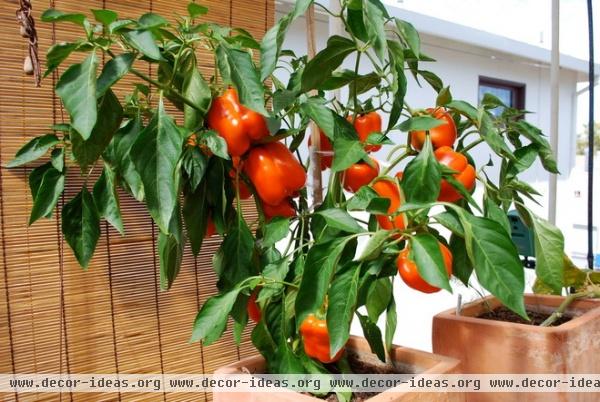
1. Get watering right. Masley says poor irrigation is the No. 1 reason edible container gardens fail. Soil in containers dries out especially quickly, so check soil moisture frequently. In an especially sunny or windy location, this may even mean watering daily or twice a day. Avoid overwatering, though, as that can create fungus and root rot.
Though you can water by hand, installing an automatic drip line is the easiest and most consistent method. Masley recommends making a loop out of the drip line around the plant, instead of using a single dripper. It distributes water better, preventing plants from drowning or drying out. He also tops containers with compost to lock in moisture better.
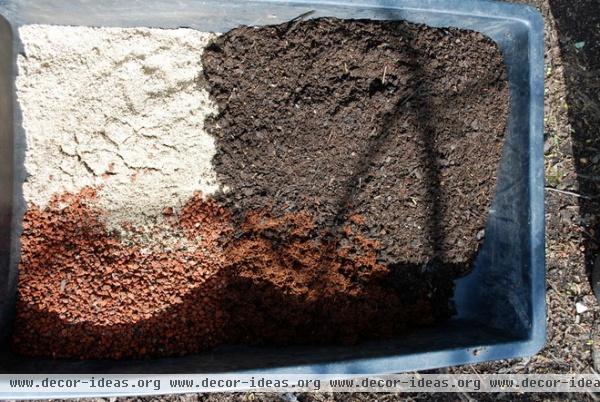
2. Prep your soil. Ask people who grow a lot of edibles for their secret, and chances are they will all tell you the same thing: good soil. Container gardens need soil that is quick draining, moisture retentive and nutrient rich.
Nurseries sell organic potting mixes, but you can also make your own. Masley warns against using soil directly from the yard as it often contains clay and silt, causing drainage problems.
Masley has devised his own organic potting mix recipe:
One part coarse (builder’s) sand Two parts good garden compost, siftedOne part rehydrated coir (coconut husk fiber)One part 5/16-inch horticultural lava rock or perlite
Mix all of these together. Masley builds organic soil amendments into the soil from the very beginning. The nutrients slowly release throughout the growing season, so all you need to do is water.
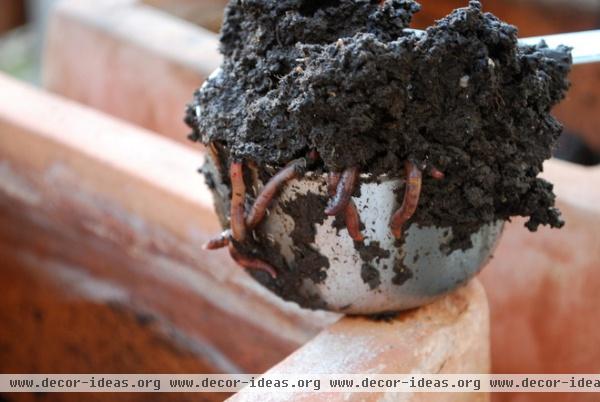
He also adds a special ingredient to his soil: worm castings. Dried worm castings work, but Masley uses fresh ones — with live worms. The worms are very efficient at cycling nutrients and converting them to a form that is usable for plants. “They also enrich the potting soil with beneficial bacteria and fungi that compete with pathogens that might attack your plants,” he says.
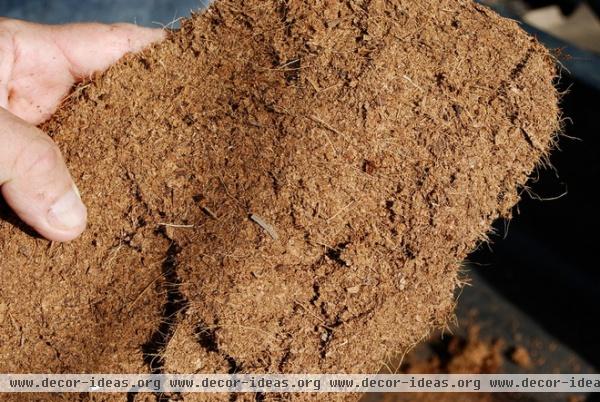
Masley uses coir in his soil mixture for increased water-holding capacity. Though many organic potting mixes suggest peat moss, Masley prefers coir. Peat moss repels water if it dries out, while coir will always absorb water and is more sustainable than peat.
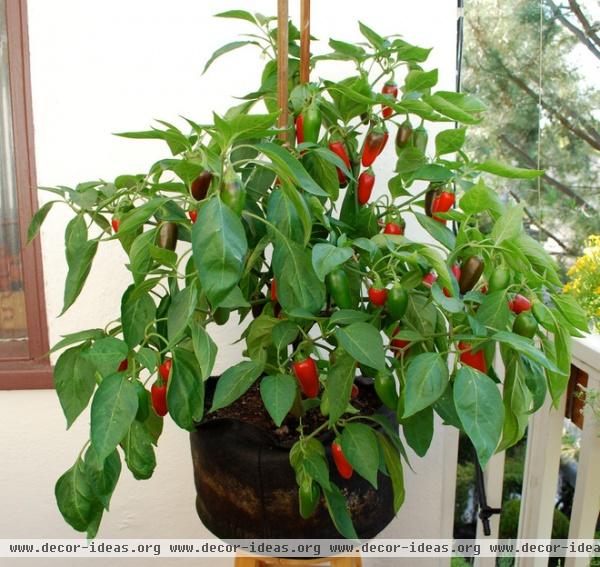
3. Resist overcrowding. Overcrowding is a major container farming pitfall — one mistake that I know I’m guilty of. If one tomato plant is OK, then two must be good and three must be better, right? Unfortunately not.
Masley says most plants need 5-gallon pots, including these pepper plants — one pepper plant needs a 5-gallon pot. Though packing in the plants may seem like a foolproof way of accounting for the failure of some plants, you are actually hindering the success and productivity of all the plants. Multiple pepper plants in one container will be in constant competition and most likely will produce less combined than one healthy plant would have.
Masley says you are also setting yourself up for a lot of work with pest and disease management. “Crowded plants are stressed by competition,” he says, “making them more susceptible to pests and diseases and reducing their yields.” Give yourself a break and think one plant, one pot.
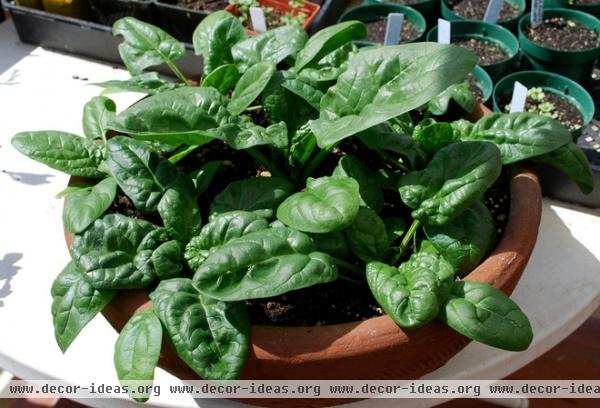
4. Give your edibles enough light. As with other edible gardens, six to eight hours of good light is ideal for container gardens. South- and west-facing spots are best, but it’s possible to grow edibles on north- and east-facing locations — it’s just trickier.
In areas that receive less sunlight, Masley suggests planting earlier-harvest varieties. “If you really want to try a tomato, choose a cherry tomato instead of a beefsteak tomato,” he says. “Peppers like ‘Ace’ produce fruit in 70 days and may work.” Increase the spacing between the plants, say to 8 inches from 6 inches, to allow the leaves to grow and attract as much light as possible. Lettuces and greens grow well in a little less sun. You’ll just have to try different lighting conditions and see what you get.
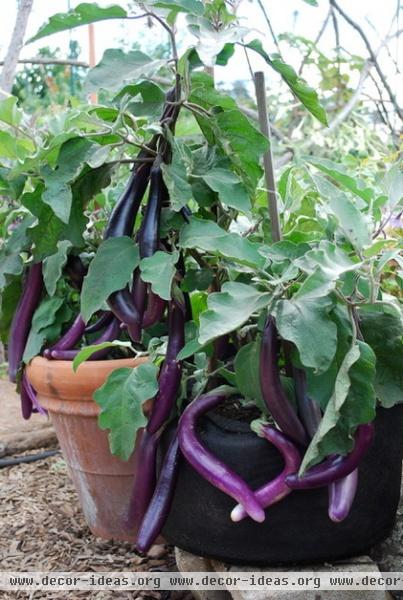
5. The bigger the pot, the better. Yes, edibles will grow in smaller containers, but you’ll be putting yourself in a difficult spot right off the bat. The larger the pot, the deeper the roots can establish and the more resilient the plant will be. The roots will be stronger and able to hold water better and longer, helping out with your No. 1 problem. “The soil holds more water and takes longer to dry out,” says Masley. “The plants are also stronger, more resilient, and better able to handle the stress of drying.” Resist the urge to plant in those tiny random planters you have scattered around and buy the big pot first.
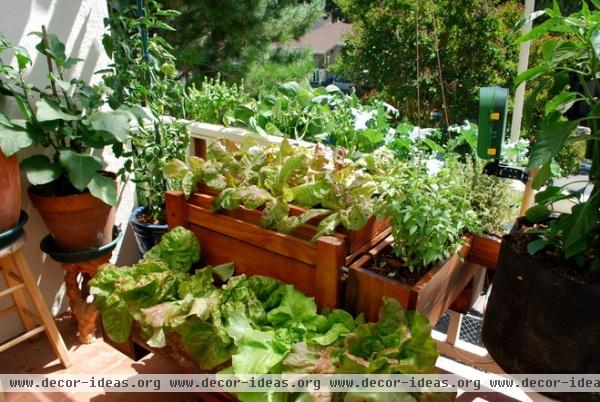
6. Not all containers are created equal. The size of the container, as well as its shape and material, will contribute to the success of your edibles. Masley prefers globular or cylindrical pots to the traditional tapered pot. The tapered pot exposes a greater percentage of its soil to direct sunlight, leading to dry soil faster. “The top few inches of soil are always dry, so that zone is basically useless for the plant,” he says. When you minimize the exposed soil, you minimize the amount that will dry out and help keep the roots hydrated.
Depending on your garden’s exposure, the color and material of your planter can affect the plants too. Southern- and western-facing spots, which receive ample sunlight, benefit from lighter-colored pots (which reflect sunlight), while northern- and eastern-facing spaces need more heat and can be planted in darker containers. Metal planters will also help warm up the soil in those cooler and darker areas. Terra-cotta pots are always good, too. For those who may need to move their planters a lot (renters, perhaps), Masley suggests fabric containers. They pack flat and are very portable.
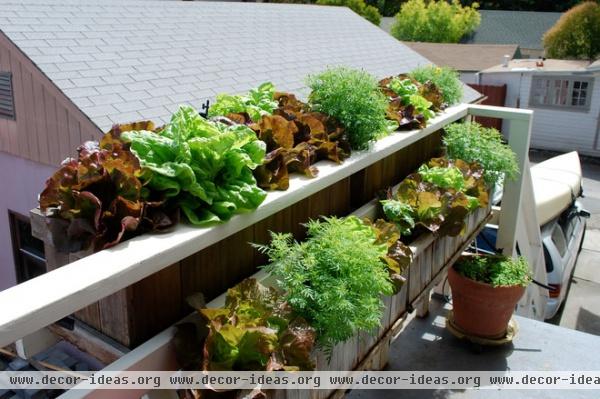
7. Save space with a window box. Masley suggests window boxes, especially for growing lettuces, to save space. Though they are shallower than other containers, they’re longer, so roots can run the length of the planter’s base. The wood keeps roots cool, and mounting the planters on the wall minimizes the space they occupy — great for small decks and porches — and makes harvesting a breeze.
See how to build a window box
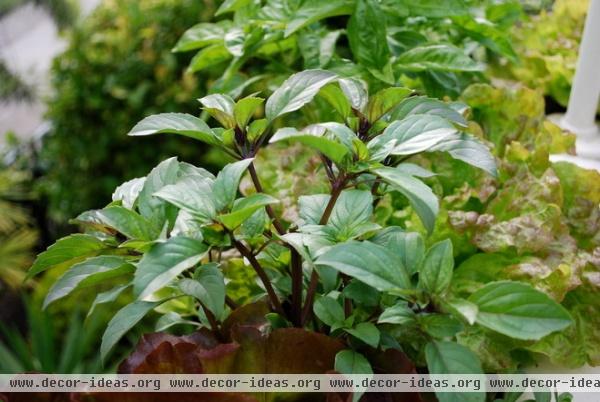
8. Start with herbs. Herbs are resilient; they’re the easiest edibles to grow and also the most convenient to have in a pot near the kitchen. How often do you actually need more than a snip or two of rosemary or basil? Thyme and oregano are especially resilient. “Basil is a must for any cook’s summer garden,” says Masley. He grows Gevovese and Napolitano (saladleaf) basil for pesto, and ‘Mrs. Burns’ Lemon’ basil for seafood and shellfish dishes. He suggests a 1-foot-diameter pot for herbs.
See how to grow herbs
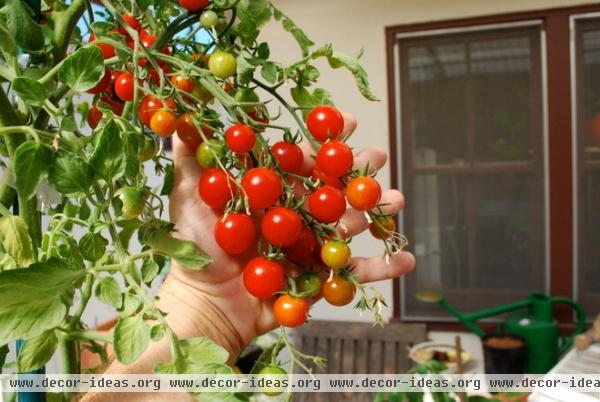
9. Try cherry tomatoes. Tomatoes are great container plants, but it’s easy to forget to water them enough in the heat of summer, and tomatoes can fall victim to blossom-end rot, a problem caused by water and calcium deficiency. Masley suggests trying cherry tomatoes instead. They are less susceptible to blossom-end rot — the smaller the tomato, the easier it is to grow. Plant them in at least a 7-gallon container.
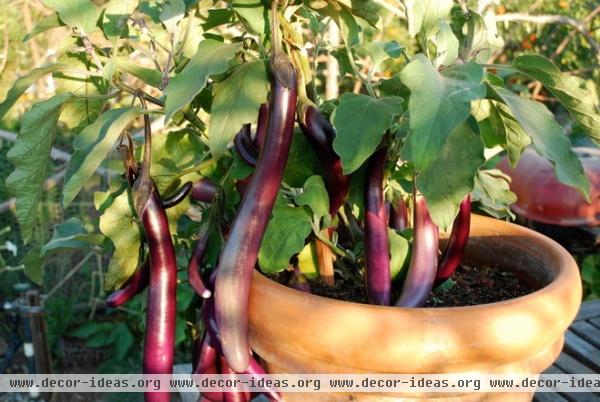
10. Respond to your microclimate. “Pay attention to the way the shadows fall across the space throughout the year, and put heat- and sun-loving plants in the sunniest, warmest spots, and leafy greens where they’ll get some shade,” says Masley. “If you want to see how the shadows fall in six months, check the shadows of the full moon — that’s where the sun will be in six months.“
In cool zones try placing your pots directly on the ground to absorb additional heat. Consider darker containers or containers made from metal to warm up the soil. If your site is especially warm, place the pot on a spacer or consider a mobile salad table to shade plants from afternoon heat.
More:
10 Easy Edibles for First-Time Gardeners
Containers Make Growing Edibles a Cinch
Related Articles Recommended












